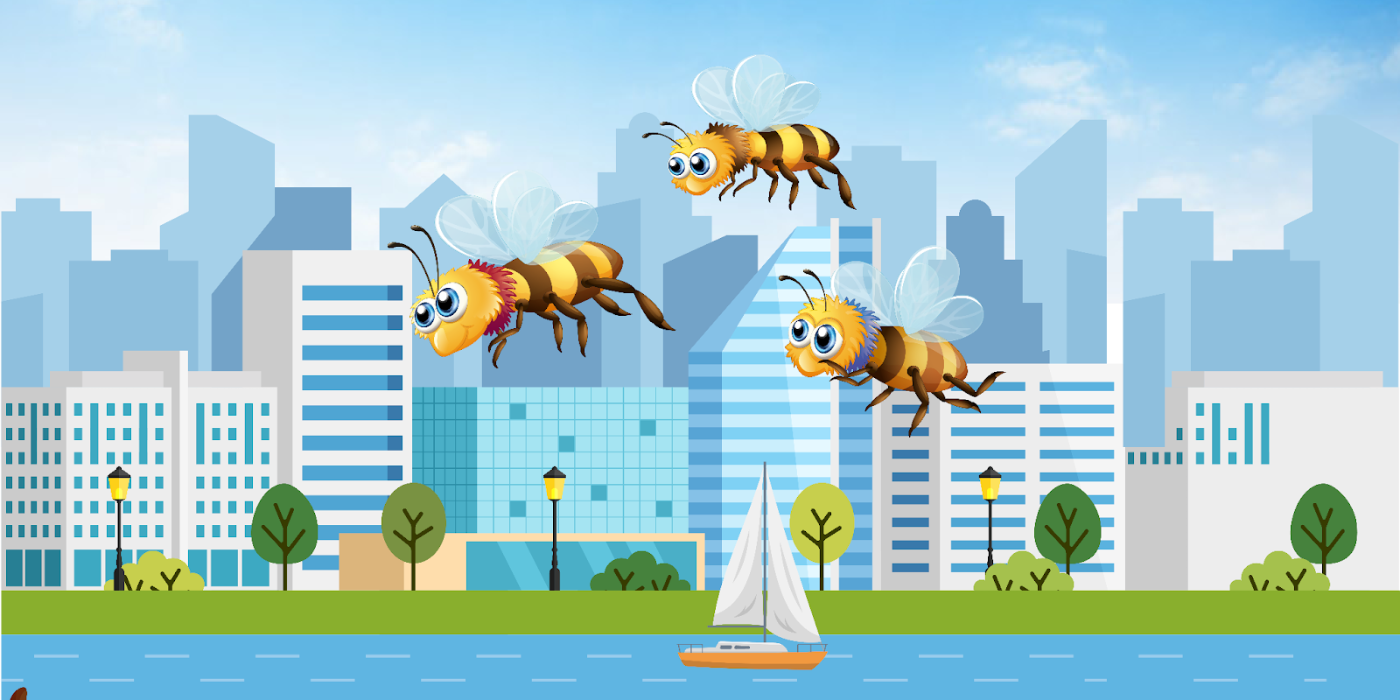
Urban Beekeeping A Guide to Bringing Bees into Your City Life
Urban beekeeping is a growing trend in cities around the world. Not only does it provide a source of delicious, locally-produced honey, but it also helps to support declining bee populations and promote biodiversity in urban areas. In this blog post, we'll explore the benefits of urban beekeeping and provide tips for starting your own hive in the city.
Why Keep Bees in the City?
The decline of bee populations has become a global issue, with the use of pesticides, habitat loss, and disease all contributing to their decline. Urban beekeeping provides an opportunity to help reverse this trend, with the added benefit of producing fresh, local honey.
In addition to supporting the bee population, urban beekeeping can also have a positive impact on the environment. Bees play a critical role in pollinating plants, which is essential for maintaining healthy ecosystems. By keeping bees in urban areas, we can help promote biodiversity and create green spaces for both bees and humans to enjoy.
Starting Your Urban Beekeeping Journey
If you're interested in starting your own hive, there are a few key things you'll need to consider.
- Firstly, you'll need to ensure that it's legal to keep bees in your area. Some cities have restrictions or regulations around urban beekeeping, so be sure to check with your local government before getting started.
- Once you've confirmed that urban beekeeping is allowed in your area, you'll need to choose a location for your hive. Ideally, your hive should be in a sunny spot that is protected from the wind, with access to a source of water. Be sure to choose a location that is not too close to other people or animals, as bees can be territorial and may become defensive if they feel threatened.
Here are a few tips on how to tame your bees
Choosing the Right Equipment
Choosing the right equipment can make you go a long way in beekeeping! Click here to shop for the best beekeeping equipment and MORE!
- When it comes to beekeeping equipment, there are a few key items that you'll need to get started. These include a hive, frames, and protective gear. The hive is the structure that houses the bees, and there are a variety of different types available, including Langstroth hives, top-bar hives, and Warre hives.
- Frames are the removable panels that fit inside the hive and provide support for the comb. They come in a variety of sizes and shapes, and can be made from wood or plastic. Protective gear is also essential, as it helps to keep you safe from bee stings. This typically includes a bee suit, gloves, and a veil.
Maintaining Your Hive
- Once you've set up your hive, it's important to maintain it properly to ensure the health and productivity of your bees. This includes regular inspections to check for signs of disease or pests, as well as monitoring the honey stores and adding new frames as needed.
- In addition to regular inspections, it's also important to provide your bees with food and water. Bees require a source of nectar and pollen to survive, so planting bee-friendly plants and flowers in your area can be a great way to support them. Providing a source of water, such as a bird bath or small pond, can also help to keep your bees hydrated.
Harvesting Your Honey
- One of the most exciting parts of urban beekeeping is the opportunity to harvest your own honey. Typically, honey can be harvested in the late summer or early fall, when the bees have produced enough honey to sustain themselves through the winter.
- To harvest your honey, you'll need to remove the frames from the hive and extract the honey from the comb. This can be done using a honey extractor, which uses centrifugal force to spin the honey out of the comb. Once you've extracted the honey, it can be bottled and enjoyed as a delicious, locally-produced treat.
FAQ Section
1. Is urban beekeeping legal in all cities?
Urban beekeeping is not legal in all cities. Regulations vary by location, so it’s essential to check with your local government to understand the specific rules and requirements for keeping bees in your area.
2. What type of hive is best for urban beekeeping?
The best type of hive for urban beekeeping depends on your space and preferences. Langstroth hives, top-bar hives, and Warre hives are all popular choices. Langstroth hives are common and versatile, while top-bar and Warre hives offer more natural beekeeping approaches.
3. How can I ensure my bees have enough food and water in an urban environment?
Planting bee-friendly plants and flowers in your area can provide essential nectar and pollen for your bees. Additionally, providing a water source like a bird bath or small pond can help keep your bees hydrated. Ensure the water source is shallow or has floating objects to prevent bees from drowning.
4. What should I do if my bees become aggressive?
If your bees become aggressive, ensure they have enough space and resources, as overcrowding and lack of food can cause defensiveness. Regular hive inspections and maintaining a calm demeanor while working with your bees can also help. If aggression persists, consider requeening the hive with a less aggressive queen.
5. How do I harvest honey without harming the bees?
To harvest honey without harming the bees, use a honey extractor, which gently removes honey from the comb using centrifugal force. Ensure you leave enough honey for the bees to sustain themselves through the winter. Properly managing the hive and avoiding over-harvesting are key to maintaining a healthy and productive colony.
Want to learn more about your bee friends? Click Here



Leave a comment